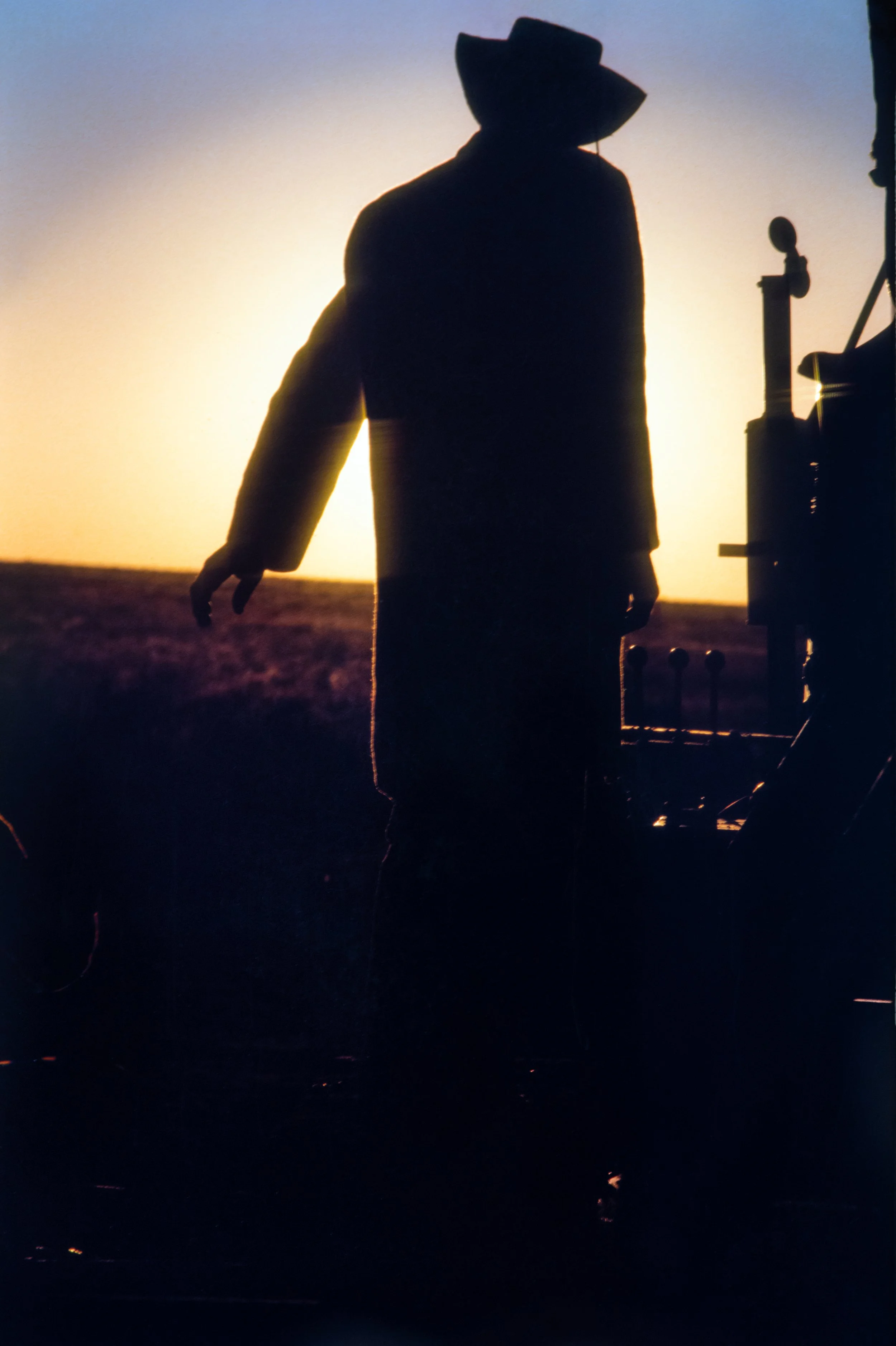Sun in the North by David Goold
David Goold leaning against the white Land Rover
I celebrated my 21st birthday under the generous canopy of an umbrella thorn in South Africa’s Northwest Cape province. The Land Rover’s bush guard became a makeshift barbeque grille. T-bone steaks the size of dinner plates sizzled and my caravan’s fridge was stuffed with cold beer. The beer was fresh, but the vials of assorted snake bite serum next to it were seven years past their ‘use by’ date.
It was impossible to celebrate with my work colleagues and new friends any other way. We were three hours’ drive from the nearest town and anyway, this was 1981; the country had reached peak apartheid. In those days, I could walk into a shop or hotel using the front entrance but my black and coloured colleagues used the back door if they were allowed entry at all. 'Blankes' and 'Nie Blankes' had separate park benches, public toilets and drinking water fountains. Segregation based on skin colour was more strictly enforced in the cities than in semi-desert rural communities like Kenhardt, but long-standing laws were so deeply engrained for generations that breaking them was still treated as a breach of social etiquette. No-one questioned it in my limited circle of acquaintances, no-one complained; it was what it was.
I was a visitor from Scotland, a fresh-faced undergraduate geologist on work experience with a company searching for copper ore. My visit was controversial on a personal level; these were the years when trade sanctions were being discussed which eventually helped bring an end to apartheid. But I was filled with naïve optimism and a desire to find out for myself. I needed to experience the sun in the north and a midwinter in June. The 80s was a decade where young, privileged people travelled the globe with a deep need to understand, without prejudice, the lives of those who weren’t privileged. I suppose, unconsciously, I was a part of that international brigade. I was certainly privileged; on my birthday, Mandela spent his day breaking rocks into gravel.
What I found on my arrival was complicated; things literally and figuratively weren’t black and white. But that’s a different story; mine is much simpler. Working for weeks on end in the challenging arid landscape, I developed a bond with my differently coloured workmates. And so we sat together under that tree, sharing steak and roasted sweet potato and drinking cool beer. I still remember their biblical names: Jacob, Judge, Daniel, Peter, Solomon, Zacharia and Joshua. They asked questions about my far-off land and marvelled at the idea of an undersea tunnel which might soon connect two countries, and trains that travelled at 260 km/hr.
As I prepared for my return to Scotland and to say farewell to those I had worked with, I received an unusual invitation; to visit the township on the outskirts of Kenhardt where their families lived. The invite was for both me and my camera. Such a visit was most definitely ‘VERBOTE’ but I felt compelled to accept. This was an open invitation to record what I saw there without restriction.
And so I found myself walking conspicuously into the shanty town carrying my Minolta XG2, two Rokkor lenses, and one roll each of Ektachrome 64 and HP5. What I encountered there was a revelation; the conditions were tragic but my reception was warm and overwhelming. I was an alien curiosity who dared break age-old law and etiquette, but the hospitality with which I was received was spontaneous and genuine. I spent a day shooting sparingly with the limited film stock I had.
The 40 year-old transparencies and negatives were rediscovered during the first pandemic lockdown of 2020. Their digitisation revealed details I had never noticed or had long forgotten. These are rather intimate moments observed at close quarters. The open-faced people in those photographs have wide eyes; they don’t hide their souls behind them. So many faces smile genuinely when I appear and children run and jostle to get in the frame. But look at the conditions; look at the collapsing toilet blocks, the corrugated tin roofs and walls, the barbed wire and the dust. That soil really is as red as I remembered; to paraphrase Alexandra Fuller, as if it had absorbed the blood of white men, Africans and slaughtered cattle.
Years later, in the fast moving digital era of the late 2000s, I thought I had ‘discovered’ street photography for the first time. Those ‘street’ images I’d taken in 1981 were long forgotten. Now I can see that the seed of my later work was sown there but my photographer’s eye had changed over the intervening years, and not necessarily for the better. Those township photos seem to be the least distanced candids I’ve ever made; as if the photographer was part of the frame and not simply an observer.
I never returned to South Africa, but I recently discovered a small number of photographers who have also documented the townships, from Brian Heseltine and David Goldblatt in the 1950s to Anne Rearick and Lindokuhle Sobekwa today. What strikes me is the timelessness in all the photographs that I’ve seen or made myself; a photograph made in 1951 might equally have been made in 1981, or 2021. The dilapidated toilet blocks, the corrugated iron, the barbed wire and the red dusty soil form a permanent backdrop to an endless tragedy playing out through the decades. But also to be seen are the soulful faces, full of dignity and grace, and the laughing children who somehow live there. I dedicate these words and images to the people I met in Kenhardt and who so generously shared their lives with me for a day.
David Goold
January 2024




















